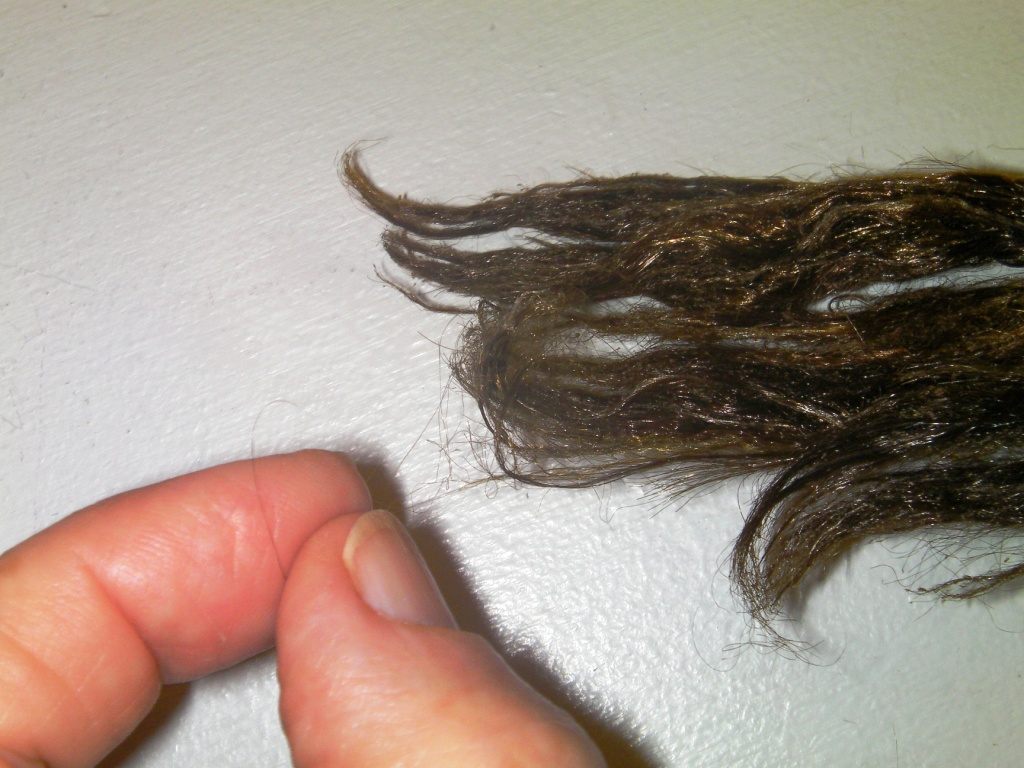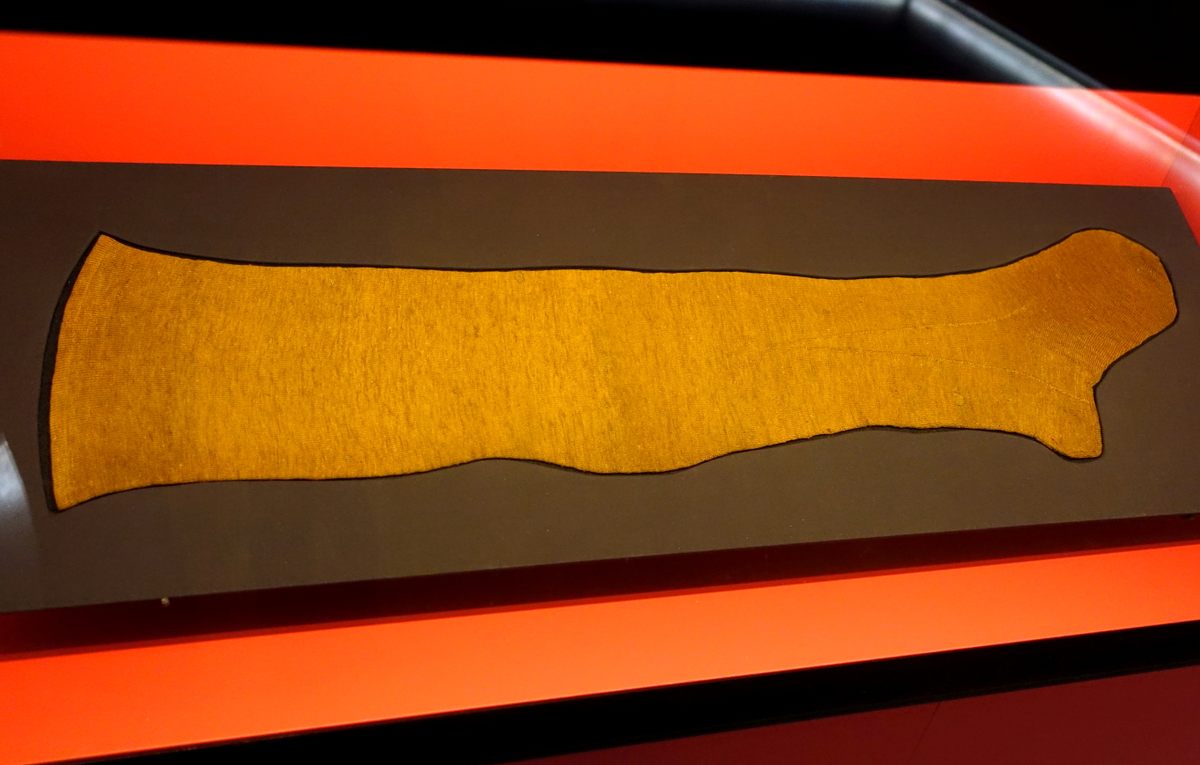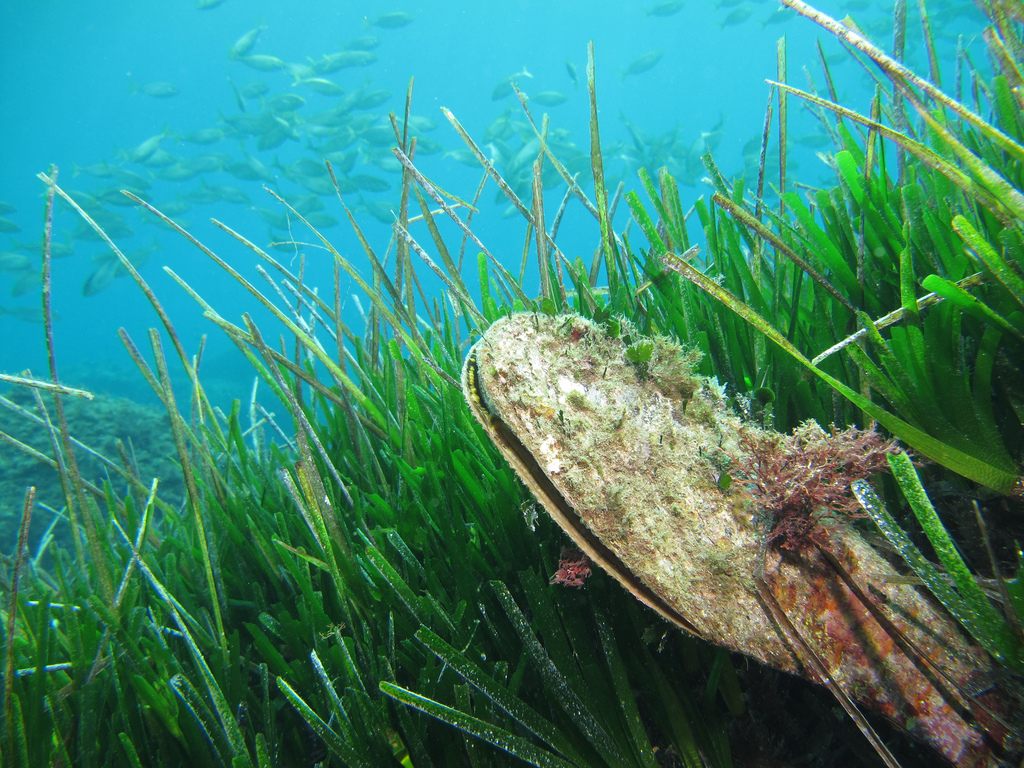You’ll Probably Never Get to See, Let Alone Touch, Sea Silk
Untangling the mysteries of the world’s rarest thread.
Sea silk sounds like the stuff of legend. Harvested from rare clams, this thread flashes gold in the sunlight, weighs almost nothing, and comes with a heavy load of misunderstanding, misinterpretation, and misinformation. But the fiber itself is no myth. Its flaxen strands come from Pinna nobilis, or the pen shell, a giant Mediterranean mollusk that measures up to a yard in length. To attach themselves to rocks or the seafloor, some clams secrete proteins that, upon contact with seawater, harden into a silky filament called byssus. The byssus of the pen shell makes sea silk, the world’s rarest thread.
The BBC reports that only one person alive knows how to spin this clam fluid into golden twine, and this is where the myth begins. By the light of the moon, 62-year-old Chiara Vigo dives up to 17 yards deep, into a network of secret underwater caves off the coast of Sardinia, where the clams can be found. As the Italian Coast Guard watches protectively from the shore, she may dive 100 times to produce a single ounce of the fibers, by trimming the byssus from each bivalve with a tiny scalpel. These beard-like growths can be up to six inches in length. The BBC further describes how she says a prayer before each dive, and adheres to a so-called ancient, sacred “Sea Oath” that prevents sea silk from being bought or sold.

Vigo’s oft-repeated claim to sole ownership of the clams’ secrets are likely untrue. Up until the 1950s, Sant’Antioco, a small island to the southwest of Sardinia, was among a few places where sea silk was manufactured. Italo Diana, a famous sea silk weaver, passed on her knowledge to many locals, including Efisia Murroni, who died in 2013, but not before teaching many others. In her 2015 book, Spirals in Time: The Secret Life and Curious Afterlife of Seashells, marine biologist Helen Scales tells the story of Giuseppina and Assuntina Pes, two sisters on Sant’Antioco who learned the preparation of sea silk from Murroni, as did other neighbors and friends who have received less media attention than Vigo. Scales describes their process. First, the filaments are soaked in seawater, then in fresh water. Next, the women tease them out with a spiky comb, and then spin the filaments to a fine thread with a spindle. Lemon juice brightens and clarifies the thread, which is anywhere from bronze to blonde in color.

Since 1992, the European Union has enforced a blanket ban on harvesting or harming the pen shell mollusks. The Pes sisters pull their supply of byssus from their own dwindling stockpile, and the occasional dead shell found by a fisherman, But their days of spinning the threads are likely numbered. “Assuntina and Giuseppina see no way to obtain sea-silk, but it’s something they seem calmly resigned to,” writes Scales. Vigo holds that her scalpel method, like giving the clams a haircut, does not harm them. This allows her to continue to harvest byssus and then push the clams back into the mud. Vigo told the BBC that her family has been passing on the tradition of the thread for almost 1,000 years, including this particular trimming method. However, researchers say, almost nothing is known directly about the history of sea silk before about 1700—though its myth-shrouded history seems to date back much further.
But there’s a complicating linguistic factor to teasing apart this history. The Latin term “byssus,” in ancient writings, can appear to refer to both fine linen and sea silk. Because of that, it has been hard for researchers to ascertain whether the byssus mentioned on the Rosetta Stone, for example, is ordinary or extraordinary. The word crops up again in descriptions of ancient Egyptian burial customs, as the cloth used to wrap mummies. In the Bible, too, byssus is mentioned in multiple places. Researchers have questioned whether this holy textile, finer than the skin of an onion, comes from a plant or the sea. Moreover, the linen byssus was reserved for sacred use, says researcher Felicitas Maeder. “Only in the 16th century [was] the fiber beard of the Pinna named Byssus, in analogy of the fine Byssus of the ancients. Not vice versa,” she told The Thinker’s Garden. “This fact led and still leads to the misunderstandings dominating the discussion today.” To complicate matters, it’s now also used as the general scientific term for some clams’ anchoring filaments.

One place byssus certainly doesn’t come from, however, is a water sheep. These fictional beasts appear in stories from Chinese traders dating back to the second and third centuries. Water sheep, with duck-like webbed feet, were said to live beneath the waves of the Roman Empire, and occasionally leave tufts of their golden wool on rocks. Though references to aquatic sheep could have been something of a joke, the idea seems to have given rise to an ancient term for the fiber, mentioned by the Greek writer Alciphron: wool of the sea. (Researchers have wondered whether these fabled ovines were the source of the famous Golden Fleece—they now doubt it.)
Similar stories appear in the accounts of 13th-century Arab traders: “One of the wonders of this sea is what is told regarding a certain animal which comes out of the water to rub itself on the sure, whereby its hair falls out. These have the color of gold and the softness of [embroidery silk] …. The value of a garment amounts to more than a thousand gold-pieces, owing to its beauty and rarity.” Export of this cloth was apparently forbidden.

Vigo and the Pes sisters seldom get to make proper cloth these days. The fibers are simply too rare and the spinning process much too time-consuming. Vigo, who does not accept payment for sea silk, sometimes uses it in the embroidery of a child’s christening gown, and only occasionally to make larger pieces. She reportedly rejected a $2.99 million offer from a Japanese businessman for a square measuring 18 inches on a side.
About 60 examples of sea silk garments persist in museum collections around the world, most dating from the last few centuries. If current trends in pen shell populations persist, the thread may be cut once and for all.


















Follow us on Twitter to get the latest on the world's hidden wonders.
Like us on Facebook to get the latest on the world's hidden wonders.
Follow us on Twitter Like us on Facebook